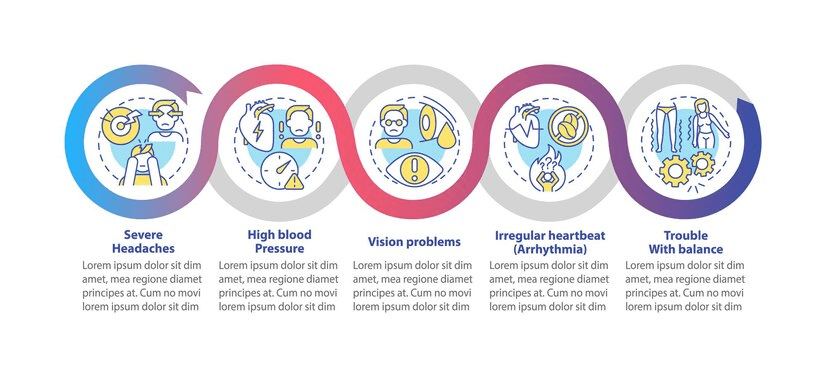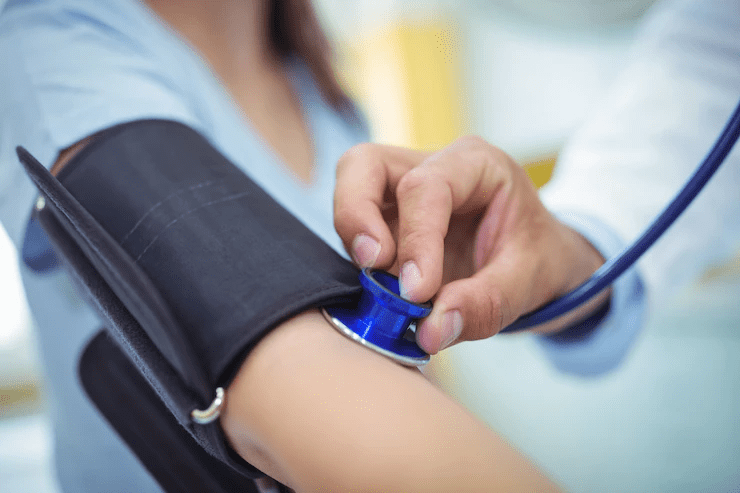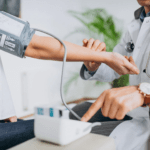Hypertension Stages
The medical term for high blood pressure that we are all familiar with, is known as hypertension. If a person has a blood pressure of more than 120/80, it means that there is an elevation in the levels. The number 120 is known as systolic and the number 80 is known diastolic. When the numbers increase, it means that a person is suffering from high blood pressure (Hypertension). But, that is not all.
There are different hypertension stages that people will encounter. In fact, many people end up ignoring their symptoms which leads to the worsening of the condition. If a person has a marginal increase of pressure, treatment may not be necessary unless there are risk factors that need to be taken into account.

Let us take a look at some of the hypertension stages and then delve into the types of hypertension that are there.
- A normal hypertension reading would show systolic less than 120 mm Hg and diastolic less than 80 mm Hg.
- An elevated hypertension reading would show systolic between 120-129 mm Hg and diastolic less than 80 mm Hg
- Then comes the first stage of hypertension where the reading would show systolic between 130-139 mm Hg or diastolic between 80-89 mm Hg
- Finally, stage II would show a reading of systolic being at least 140 mm Hg or diastolic at least 90 mm Hg
Treatment is mostly advised to people with elevated stage of hypertension if they have risks associated with the heart, diabetes or if they have a family history too. Understanding the hypertension stages will help your doctor to chart out a treatment plan that will help lower it.
There is unfortunately no cure for hypertension. But, it can be controlled which is a good thing. Often, people end up worsening the condition by ignoring it. No illness and disease must be ignored because firstly, it leads to further complications, secondly, it may put a strain on the other organs of the body. Therefore, it is essential that you get a consultation immediately and start off on medication. Ignoring the problem will do not good to you.

Now that we know what some of the hypertension stages are, let’s delve in to the types of hypertension.
- Primary hypertension: Most adults are categorised in this segment. A combination of diet, genetic, health problems etc are suspected as the causes. Making lifestyle changes can go a long way in controlling primary hypertension.
- Secondary hypertension: About 5-10% of people encounter secondary hypertension. It happens when there is a definite cause and a possibility of it getting it reversed. Younger people in the age bracket of 18-30 generally have secondary hypertension.
Other forms of hypertension include:
- Resistant hypertension: The name itself suggests that it is a type of hypertension that cannot be controlled easily. A combination of numerous medications is what is needed to treat it. If the secondary cause of the hypertension is found, treatment becomes easier. Most people are able to lead a normal life with the help of the numerous drugs that are prescribed.
- Malignant hypertension: This form of hypertension means that it has caused damage to certain organs of the body. The cases for this are very low but it is one that is quite dangerous.
- Isolated systolic hypertension: It is defined as systolic BP being above 140 mm Hg and diastolic BP under 90 mm Hg. It’s the most frequent type of hypertension in older people who are 60+. Nevertheless, younger people can also get it.
- Hypertensive emergency: This happens when a person’s BP increases more than 180/120. This is a cause for concern and immediate treatment or hospitalisation would be recommended. Neglecting it could lead to the damage of other vital organs in the body. People who encounter hypertensive emergency are very few, about 1-3% of those with hypertension. Also, people whose blood pressure rises to such levels will experience symptoms like chest pain, breathlessness, headache, dizziness, etc.
- Hypertension urgency: People with hypertension urgency have a blood pressure of more than 180/120 but do not show any symptoms. Adjustments in medication are done to lower the BP.
White coat hypertension: This form of hypertension occurs in people who have high BP temporarily due to certain circumstances around them. This is associated with CV risks and would need medical attention to avoid future risks.

Living with hypertension is not easy. Knowing that there is no cure for it can become even more challenging for people who live with it. Therefore, early treatment and lifestyle changes are recommended.
Content source:
https://www.healthline.com/health/types-and-stages-of-hypertension#other-types




